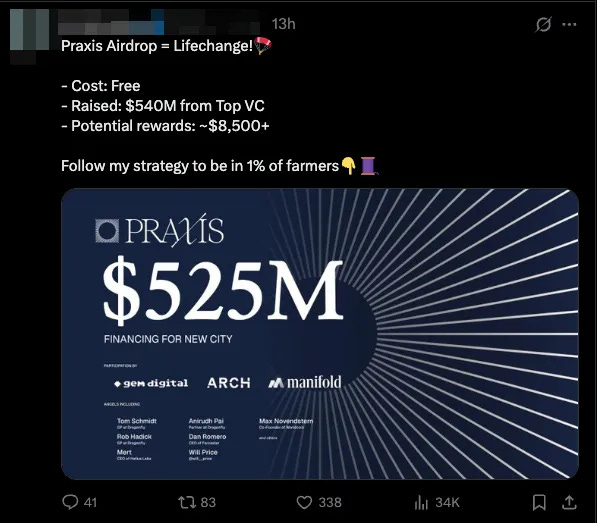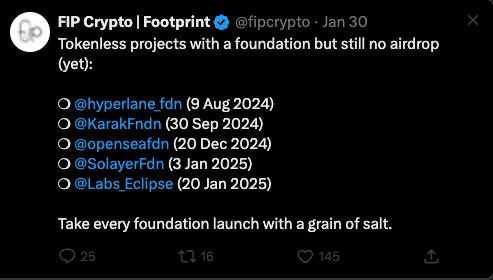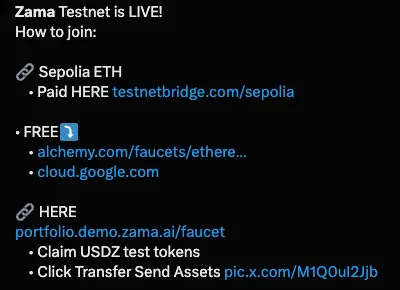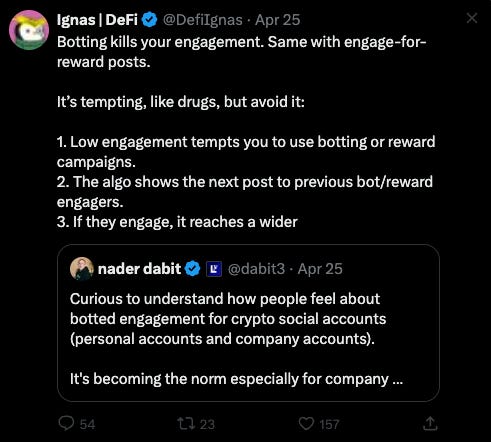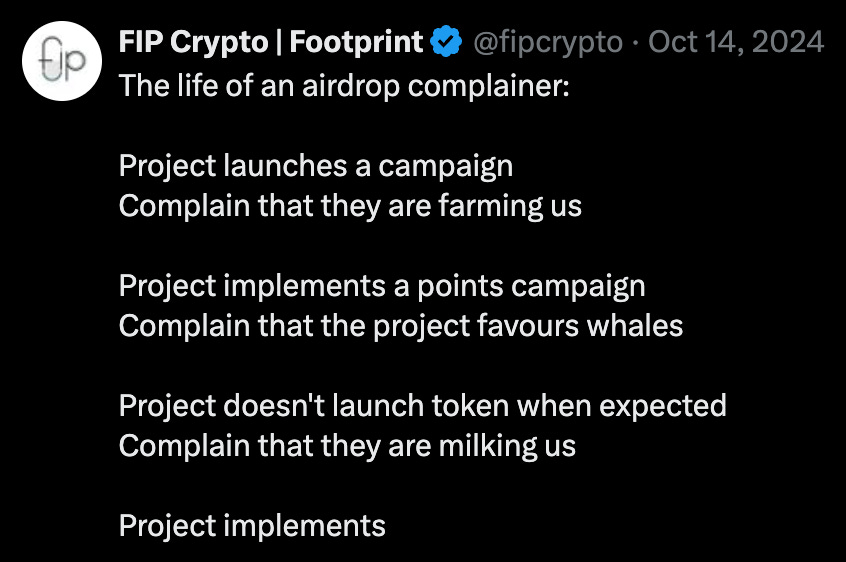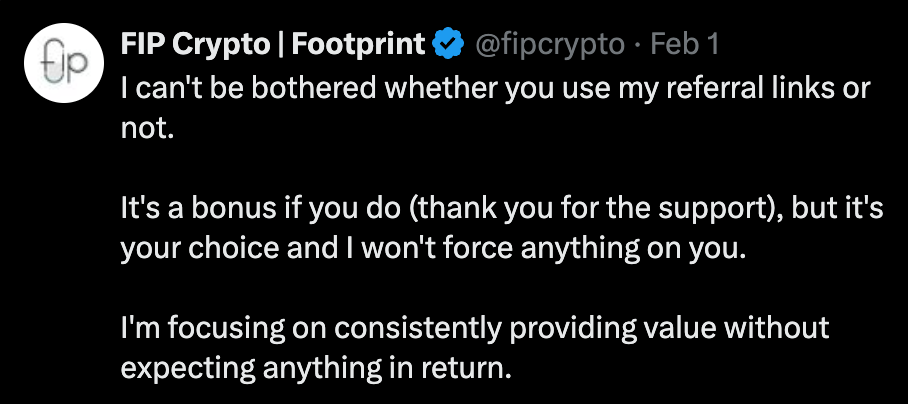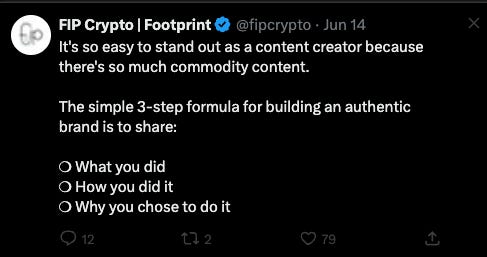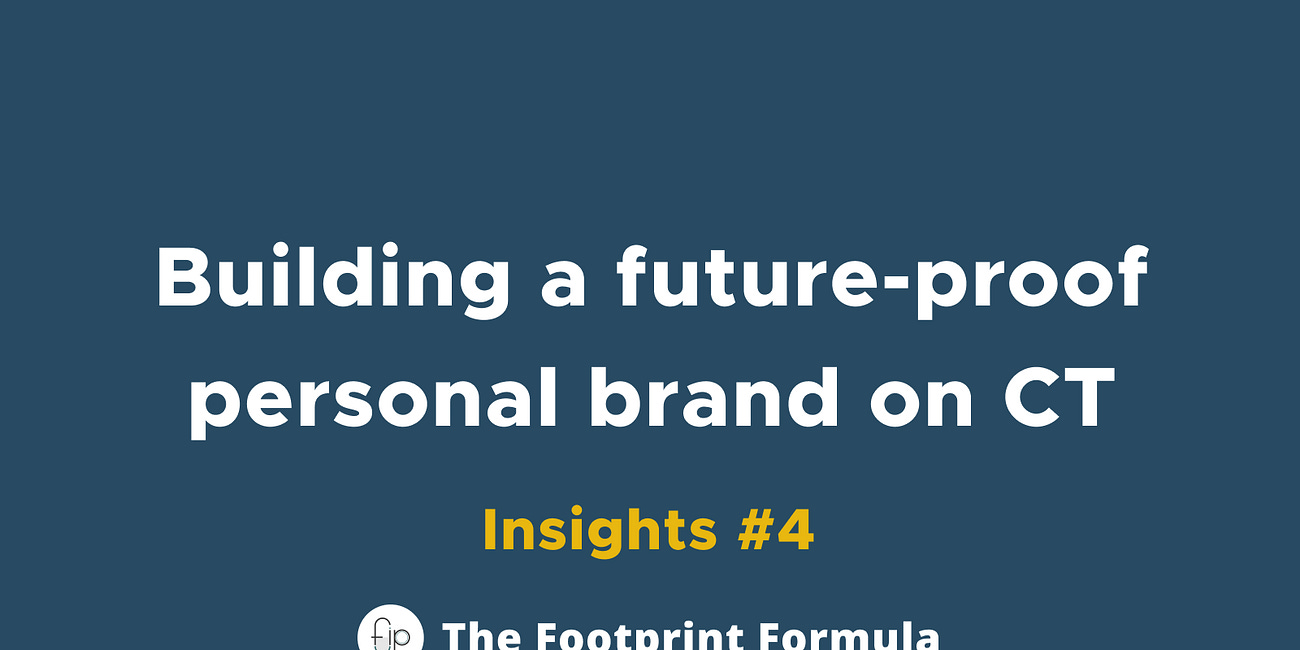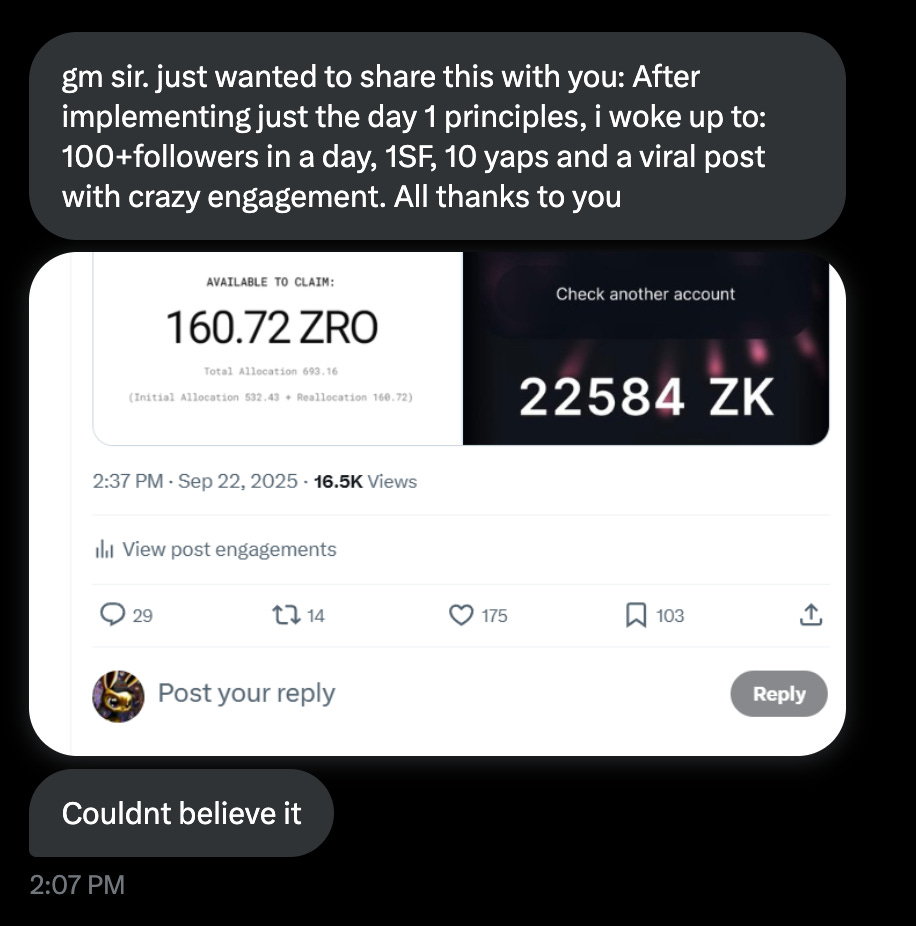CT doesn’t need another airdrop account, it just needs you
In 2023, I scrolled through Ardizor’s posts and felt completely defeated. How on earth was I supposed to compete with his metrics as a small creator?
But I soon realised that most airdrop accounts are just noise that’s disguised as value:
The content is completely worthless and I knew I could create more helpful posts than what’s on the timeline.
So I’m glad that I didn’t give up and continued to find my own voice in this sea of noise.
And if you’re just starting out as an airdrop creator (like I did):
Here are the account archetypes that I’d avoid completely:
The engagement farmer
Ardizor and his gang are the textbook engagement farmers who rely on these tactics to capture your attention:
Make 3-4 figures from $0
Projects with millions in funding
Airdrops are key to your first million in crypto
They would also include visuals and other tricks to capture your attention.
But once you read their content, it’s just list upon list of projects without showing how to actually interact with them.
Some are excellent at using a lot of words to say nothing.
They feed on hype and engagement by fuelling speculation, but there’s nothing actionable or valuable in their content.
We can speculate on rumours, but some take it too far and link every update to the airdrop:
Registering new domains
Any new announcement from the project
Launching the Foundation Twitter account
The algo feeds on hype and drama, so these posts will get lots of views.
I can continuously talk about tokenless projects and 'demand' for them to launch their token (and get tons of engagement).
But my stance is that nothing can be trusted until the official announcement is out.
Anything before that has no basis whatsoever and there’s no point posting about them.
As a creator, it’s just a race to see who posts the rumour first (and AI will likely outcompete you in this aspect).
The news aggregator
Another losing battle against AI if you’re cross-posting announcements from the project’s Twitter.
AI can post at a faster rate and higher velocity than you:
So it’ll eventually outperform you in this aspect (and others will choose to follow that account instead).
Without adding your opinions and experiences when interacting with these projects:
Your post will eventually drown in the sea of noise on Twitter.
So there’s really no point in repeating everything that’s said on the original post (unless you add something authentic from your perspective).
The simple guide writer
Ardizor and gang popularised this style of writing guides, where you could list out all the steps to interact with a project.
But this highlights the curse of commodity content:
Anyone can copy the same steps and post it from their account.
Some guides for certain projects get tons of views, but I don’t see a point in making a similar one (unless I can add my take or experience to it).
Time is my most precious resource, and it’s pointless to create something that anyone can write (including AI).
The lister
Remember all the airdrops we were supposed to get just by staking TIA?
None have come to fruition yet (except Sunrise, which likely won’t be much).
These accounts will share lists of airdrops to farm and these usually receive high engagement and views.
But again, anyone can write these posts and it doesn’t add much value to the reader.
I don’t see a point in writing these posts as there’s nothing actionable or insightful I can provide.
The flexer
Some will post screenshot after screenshot and flex all their wins.
This may help to build credibility, but others can’t relate to you completely.
The account seems too perfect, and too unattainable to others.
Quoting from @leonabboud_:
“People don’t only want to see the wins, they don’t want to hear a story that stacks success upon success, without overcoming any hurdles.”
Sharing failures may be seen as weak to you, but it helps others to trust you more.
The giveaway pusher
Some accounts rely on giveaways for account growth, but it’s like a drug that will keep you hooked.
The engagement will always be higher, but this comes at a cost:
People expect you to continue giving out freebies, and they don’t care about other content you post.
The algo won’t push your post further because your core group of followers did not engage with it.
Growing first and then giving value later doesn’t work because there’s an audience mismatch in your content.
Giveaways are a quick way to boost your growth, but they’ll hurt your account in the long run (where you’re forced to continue this death spiral).
The complainer
Complaint posts get tons of attention because they feed on emotion.
But complaining does nothing to change our fate.
And if all of our content is just about complaining about bad airdrops, others will start to unfollow us.
Win or lose, there are always lessons to learn from every airdrop.
We can be disappointed with a drop, but airdrops and emotions never go well together.
Sharing our lessons will be way more valuable than just complaining about everything.
The paid ads billboard
InfoFi has made it painfully obvious that some accounts will just talk about anything for the rewards.
In the end, these accounts will become irrelevant because they are noise generators above all else.
Yes, they have probably made $50k+ talking about Magic Newton, Caldera, and so on.
And I’m the biggest fool (as everyone’s been telling me) for not jumping on this train.
Ultimately, I see content creation as creating value for the viewer, and paid ads certainly do not provide any value.
The ultimate skill in this InfoFi era is to talk about a project on the pre-TGE leaderboard without it sounding like a paid ad.
And I believe the best way of doing this is by documenting what we do onchain.
The referral shiller
Some accounts live off referrals and will shill anything that has a points system.
I shill my referral links too, but only for those that I interact with.
Ultimately, I have to provide value first to the reader to give them a reason to use my link.
And it’s perfectly fine when they choose not to either.
My aim has always been to give so much value first until others want to give back by using my links.
Optimise for value, not views
These type of posts focuses on engagement instead of value.
So here’s what we need more of instead:
Accounts that do cool stuff onchain and share what they do.
If the post helps to solve a pain point that the reader has:
They will start to trust your account.
These posts likely won’t get as many views as the hype posts:
But it’s more of forming a connection with your audience.
Trust is the key to winning this creator game, and we can only earn this by consistently providing value.
We’re also becoming AI-proof by sharing our thoughts and opinions:
AI can’t replicate our experiences and how we think. So that’s how we stand out in the sea of commodity content that’s just noise.
Those who do not provide value will lose out to AI (because they can produce content much faster than us).
Choose to solve your readers’ problems instead of optimising for views.
I shared the full trust flywheel I’m building below:
The only flywheel to build a future-proof personal brand on CT
Building a brand around trust is slower, but it’s infinitely more powerful.
The 30-day challenge to go from zero to Signal Creator
Want to capture the next wave of airdrops? You need both onchain and social reputation.
Stop wasting hours on low-value tasks and start building habits and systems that projects will reward with bigger airdrops.
Build the foundations for a reputable brand in just 30 days with one actionable tip you can implement each day.
It’s time to stop burning out on low-value tasks:


